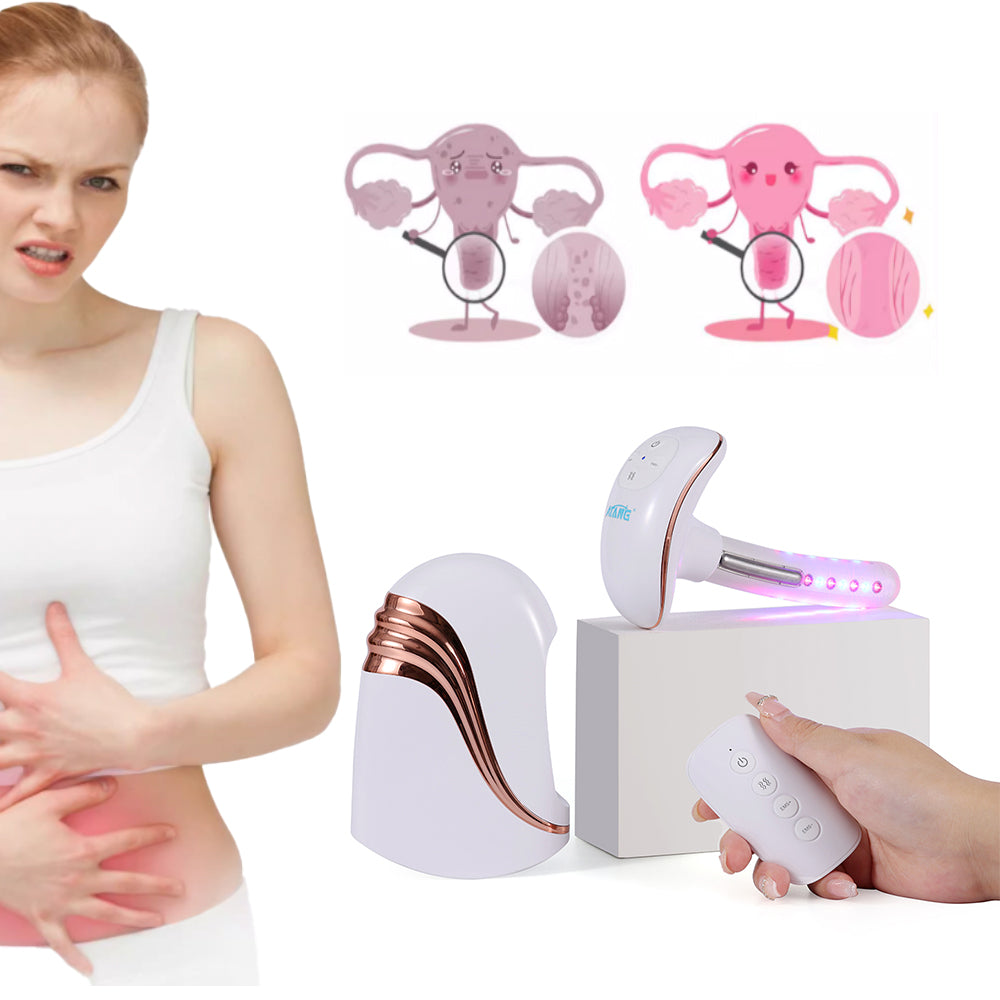Photobiomodulation therapy:
PBMT Light sources, including lasers, light-emitting diodes (LEDs), supraluminous
diodes (SLDs), and other noncoherent sourcest has been applied clinically for
a diverse array of indications, including facial rejuvenation
and treatment of skin laxity, wound healing, pain management, reduction of inflammation, stimulation of hair regrowth, and treatment of acne.
Vaginal tissue, such as skin, can experience laxity as women age or go through childbirth. Microcirculation and blood
flow in vaginal and urethral tissues decrease with menopause,
and the decline in estrogen negatively impacting vaginal hydration and bladder function. The current rationale for treating
the vaginal tissue with PBMT is to stimulate synthesis of
collagen and elastin in the vaginal tissue and supporting urethrovaginal sphincter and urethra, as well as promoting vasodilation in the vaginal and urethral submucosa.
Photobiomodulation Treatment Principle
The widely accepted theory is that photobiomodulation,
particularly at wavelengths in the red range, activates cytochrome c oxidase and increases mitochondrial electron
transport, leading to an increase in adenosine triphosphate
(ATP). Photoacceptors in the tissue cells’ mitochondria absorb red and NIR light, inducing a cascade of
events resulting in the production of reactive oxygen species
(ROS), nitric oxide (NO), and reactive nitrogen species.
Healing is affected by upregulation of specific substrates
and inhibition of others. Collagen production is stimulated,
various cytokines are upregulated [e.g., epidermal growth
factor, transforming growth factor beta, and fibroblast
growth factor (FGF)], and inflammatory cytokines [e.g.,
interleukin (IL)-6, IL-8, and IL-1] are downregulated by
photobiomodulation. Upregulation of cytochromes, other
transport and energy compounds [e.g., nicotinamide adenine
dinucleotide hydrogen (NADH), ATP, and adenosine diphosphate (ADP)], enhances the activities of various cellular
components in the local wound milieu.39–48
Avci et al. reviewed the use of PBMT for the treatment of
hair loss.60 They reported that PBMT acts on the mitochondria and may alter cell metabolism through photodissociation of inhibitory NO from cytochrome c oxidase,
specifically Unit IV in the respiratory chain of mitochondria,
causing increased ATP production, modulation of ROS,
and induction of transcription factors, such as nuclear
factor kappa B, and hypoxia-inducible factor-1. These
transcription factors in return cause protein synthesis that
triggers further effects down-stream, such as increased cell
proliferation and migration, alteration in the levels of cy
tokines, growth factors, and inflammatory mediators, and
increased tissue oxygenation. They note further that NO is
known to be a potent vasodilator via its effect on cyclic
guanine monophosphate production and it can be specu
lated that PBMT may cause photodissociation of NO not
only from cytochrome c oxidase but also from intracellular
stores such as nitrosylated forms of both hemoglobin and
myoglobin leading to vasodilation and increased blood
flow.
The interaction of photons with cells is a necessary and
essential condition for photobiomodulation to occur. Ab
sorption and transduction of this energy must occur and it is
well known that cellular molecules and structures are ca
pable of absorbing this energy at various wave
lengths. It is also known that transmission of
some portion of the incident light occurs depending on the
wavelength, the irradiance, the time course of the interac
tion, and the particular tissue being exposed to the beam.
While it is likely that a number of intracellular molecules
are capable of transduction of light energy in eukaryotic
cells, the cytochrome system is the primary target. Several
investigators have documented that photobiomodulation
upregulates ATP production via this system.
However, some cells and tissues remain unresponsive to
phototherapy, even when it is provided according to gen
erally accepted and published parameters.
Lanzafame demonstrated this phenomenon in a simple
tissue model using fetal bovine heart endothelial cells
(FBHE).67 These cells require growth factors for growth and
proliferation. They have an absolute dependency on basic
FGF (bFGF) for survival in tissue culture. They demon
strated that 660 nm photoradiation at 2.16 J/cm2 signifi-
cantly increased cell proliferation and bFGF production in
fibroblasts, which in turn increased proliferation of FBHE.
Photoirradiation of the FBHE alone did not result in
changes in cell proliferation. Both cell lines possess mi
tochondria and cytochromes, but FBHE still require bFGF
and are otherwise ‘‘refractory’’ or ‘‘unresponsive’’ to light
exposure.
PBMT has been demonstrated to accelerate wound
healing and reduce pain and inflamma
tion and cancer.PBMT augments intracel
lular metabolism by increasing ATP production, among
other metabolic pathways, as well as to induce or reduce
production of ROS and other free radicals as the mecha
nistic basis for the outcomes observed after using
PBMT. The ability of PBMT to down
regulate inflammation and modulate inflammatory processes
via cellular metabolism and cellular responses induced by
changes in ROS, NO, and other inflammatory mediators
orchestrated by light exposure might also contribute to its
mechanism of action.
Work from several laboratories has demonstrated that
NIR photoirradiation can accelerate wound healing and
tensile strength in both normal and impaired tissues and that
the effects are not related to alterations in tissue tempera
ture.48,68,69,74,96 Tissue tensile strength increases are corre
lated with increased collagen synthesis and tissue collagen
content, demonstrated in various models and with both red
and NIR wavelengths..

